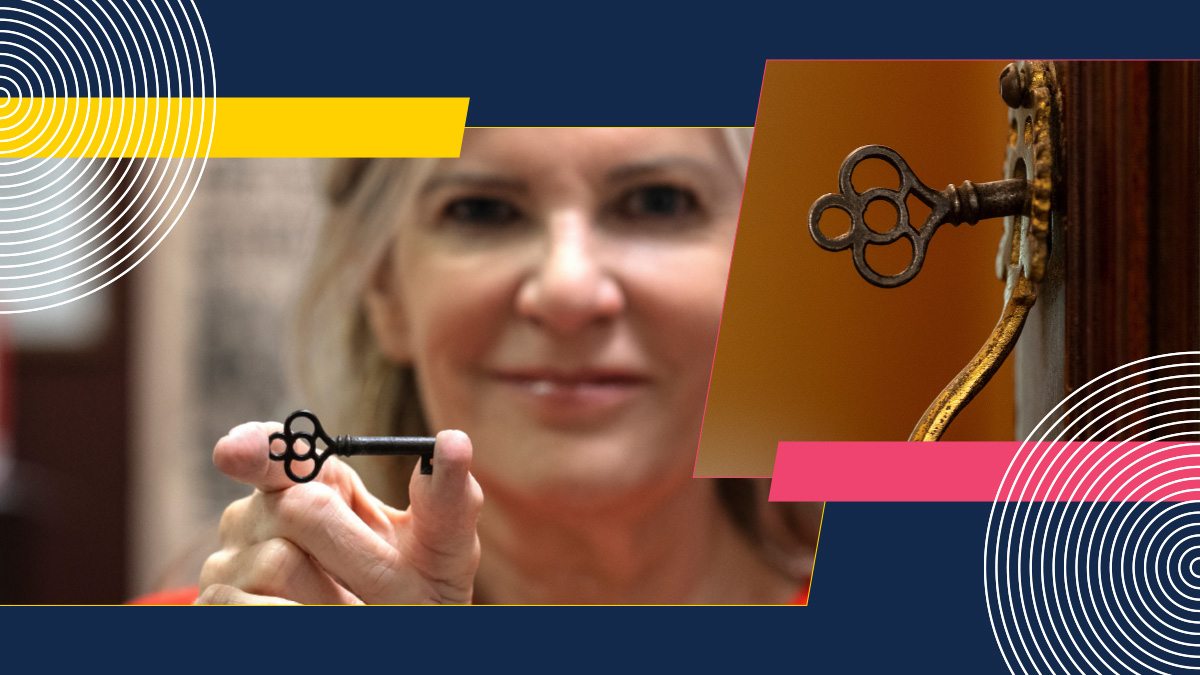Tiny tools: Skeletons unlock history
Learn how small keys help librarians showcase museum-caliber objects in our series about employees and their work tools.

Employee: Linda Jacobson, keeper of the North Carolina Collection Gallery.
Tool: skeleton keys, varying in length from 1 7/8 inches to 5 inches.
Jacobson oversee operations of the gallery on Wilson Library’smain floor, which houses more than 50,000 museum-caliber objects and 3D items of historical importance such as Audubon prints, campaign buttons, University memorabilia, costumes and uniforms. She and the staff mount new exhibitions twice a year and maintain long-term exhibitions that illustrate the history of North Carolina and the University.
Three of the hollow-barrel skeleton keys open the doors on a Victorian-era cabinet that belonged to John Sprunt Hill, who endowed the North Carolina Collection. “I researched skeleton keys online. It’s difficult to date these old keys. My estimate is that they were made anywhere from the date of the cabinet’s creation around 1900 up to 1940,” Jacobson said. “It’s interesting that the cabinet has three doors requiring three different keys.”
To use a key, Jacobson and co-workers take it from a closet, where it hangs on a wall of keys that open different exhibit cases in the gallery. The skeleton keys are also different sizes. Each has an identifying tab and hangs on a numbered hook. Staff check a chart to find the correct numbered hook, then use the key and promptly return it.
The smallest key opens the Empire Revival style cabinet that gallery visitors see first, which Jacobson said dates from around 1900. The cabinet displays short-term exhibits curated by the gallery’s student assistants who are interested in working in museums.
For Jacobson, the keys are a small but important part of a job that she said she enjoys because of its focus on preserving, storing and exhibiting historical objects.




